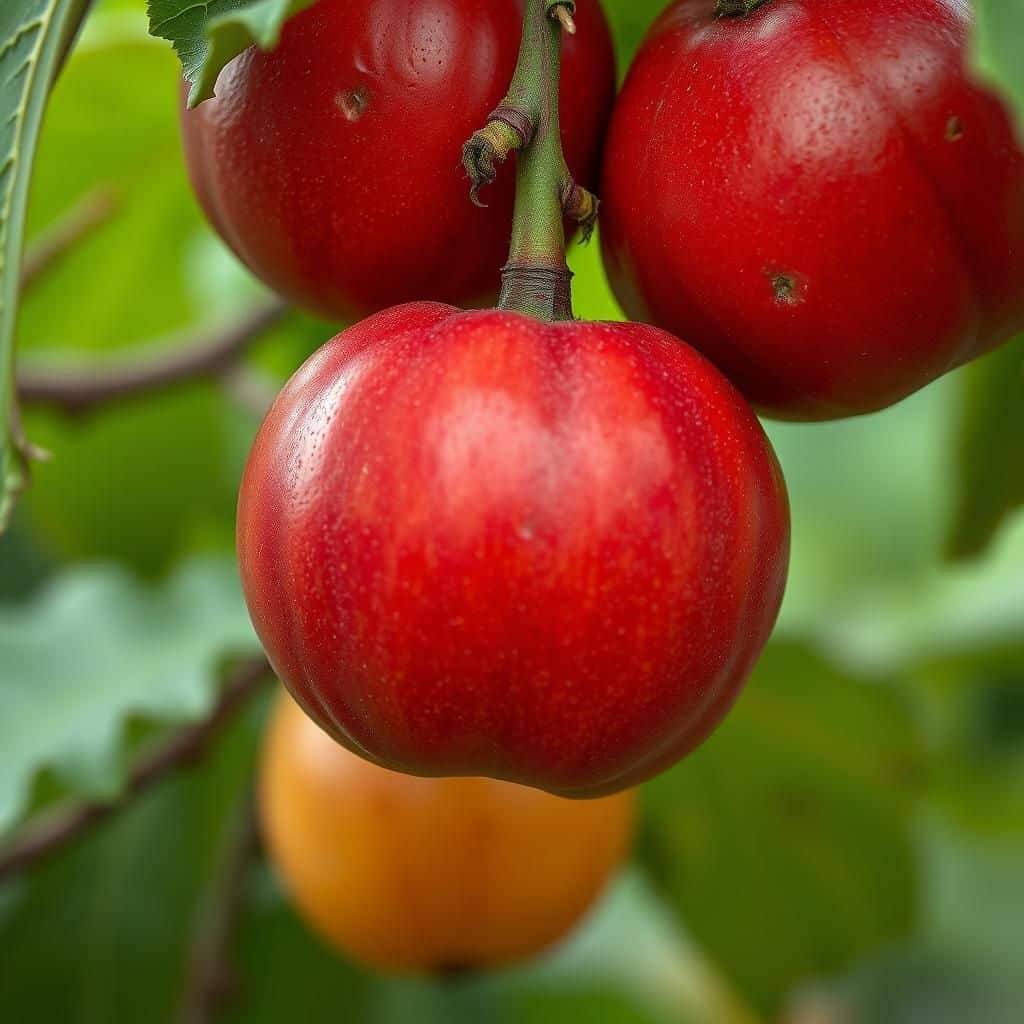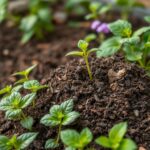Discover What is the Most Difficult Fruit to Grow? Tips and Insights for Aspiring Growers

Growing fruit can be a rewarding endeavor, but certain varieties present unique challenges that test even the most experienced gardeners. In this article, we’ll explore the most difficult fruit to grow, examining the factors that contribute to their elusive nature. From climate requirements to pest management, understanding these complexities is essential for aspiring growers. Whether you're looking to expand your gardening repertoire or simply curious about the challenges of growing ambitious fruit varieties, this guide offers valuable tips and insights to navigate the intricacies of cultivating some of nature's most demanding produce. Join us as we dive into the world of challenging fruit cultivation.
The Most Challenging Fruits to Cultivate
Growing fruit can be a rewarding endeavor; however, certain fruits stand out as particularly difficult to cultivate due to various environmental and biological factors. Among these, the Cherimoya often ranks as one of the most challenging. Native to the Andean region of South America, Cherimoya requires a specific combination of warmth, moisture, and well-draining soil to thrive. Additionally, it is sensitive to frost, and its delicate flowers depend on specific pollinators, making successful cultivation a test of both agricultural skill and local ecosystem knowledge.
Factors Influencing Fruit Growth
The growth of fruits is influenced by multiple variables that can determine both yield and quality. Key factors include climate, soil health, water availability, and pest management. For instance, the right combination of temperature and humidity is crucial for fruit trees like peaches or avocados, and poor soil can hinder growth and deter fruit production. Understanding these factors allows growers to create optimal conditions for their selected fruits.
Specific Challenges of Growing Cherimoya
Growing Cherimoya involves specific challenges that make it quite demanding for farmers. The plant is susceptible to various fungal diseases and pests, which can significantly affect the yield. Additionally, cherimoyas have a narrow pollination window and rely heavily on the presence of the right pollinators during flowering. This makes timing and environmental conditions essential for successful fruit set and maturation.
Comparative Difficulty of Other Fruits
While Cherimoya is often highlighted for its challenges, other fruits can also be difficult to grow. Fruits like the Durian, known for its unique flavor and smell, require specific growing conditions and can only thrive in certain tropical climates. Similarly, the Rambutan and Mangosteen face challenges with their delicate growing seasons and root systems that do not fare well in poor soil or excess water.
See also:
Environmental Considerations and Impact
Environmental conditions play a critical role in successful fruit cultivation. Factors such as climate change can lead to shifts in weather patterns, affecting the temperature and rainfall that plants rely on. For fruits like cherimoya, which thrive in specific tropical conditions, altered rainfall or temperature extremes can hinder growth. Understanding and adapting to these environmental impacts is vital for sustainable fruit farming.
Pest Management in Fruit Cultivation
Effective pest management is a cornerstone of successful fruit cultivation, especially for sensitive species like cherimoya. Diverse insects and fungi can threaten fruit crops, leading to significant losses if not adequately controlled. Integrated pest management strategies, including the use of natural predators, organic pesticides, and crop rotation, help maintain healthy fruit plants and reduce the risks associated with pest infestations.
| Fruit | Challenges | Optimal Conditions |
|---|---|---|
| Cherimoya | Pollination issues, disease susceptibility | Warmth, moisture, well-draining soil |
| Durian | Climate-specific requirements | Tropical conditions with high humidity |
| Rambutan | Soil and moisture sensitivity | Rich, well-drained soil; consistent rainfall |
| Mangosteen | Slow growth, specific soil needs | Humid tropical climate, rich soil |
Understanding the Challenges of Growing Exotic Fruits
Growing exotic fruits can be an immensely rewarding but challenging endeavor for many aspiring growers. These fruits often require specific climatic conditions, soil types, and maintenance techniques that are significantly different from common fruits like apples or oranges. For instance, species such as the durian or rambutan not only have intricate growth requirements but also demand considerable patience and dedication. Adequate fertilization, pest control, and proper irrigation strategies are essential to foster optimal growth. By understanding these challenges and implementing effective growing techniques, successful cultivation of these fruits can become a reality for those willing to invest the time and effort.
Choosing the Right Soil for Exotic Fruits
The foundation of successful growing often lies in the soil quality used for planting. Exotic fruits typically thrive in well-draining, nutrient-rich soils that help support robust root development. Different fruits will have specific requirements; for instance, the dragon fruit prefers sandy, slightly acidic soil, while fruit trees like the pomegranate tend to flourish in alkaline conditions. Testing soil pH and composition is crucial to determine any necessary amendments before planting, ensuring the young fruit plants have the best start possible in their developmental journey.
Climate Considerations for Optimal Growth
Climate plays a pivotal role in the successful cultivation of exotic fruits. Many of these fruits are native to tropical or subtropical regions, which means they often require consistent warmth, humidity, and sometimes even specific light conditions to thrive. For example, the mangosteen grows best in areas with regular rainfall and protection from extreme temperatures. Aspiring growers must carefully assess their local environment and consider employing greenhouses or other methods to replicate the desired conditions to support the growth of these delicate plants.
See also:
Pest Management Strategies for Exotic Fruit Plants
Like any plants, exotic fruits are susceptible to a variety of pests and diseases that can hinder their development and yield. Effective pest management strategies are critical to protecting these delicate crops. Regular monitoring for pests such as aphids, mealybugs, and fruit flies can help catch infestations early. Implementing natural pest control methods, such as introducing beneficial insects or using organic treatments, can also minimize harm while fostering a healthy ecosystem for the plants.
Watering Techniques for Different Exotic Fruits
Watering practices are essential for the successful growth of exotic fruits, as different species have varying moisture requirements. For instance, the banana plant requires a consistently moist environment, whereas plants like the cacti thrive in arid conditions with minimal water. Aspiring growers should understand the specific watering needs of their chosen fruit, employing techniques such as drip irrigation for efficient water usage or allowing the soil to dry slightly between waterings for those requiring drier conditions.
Harvesting Tips for Best Fruit Quality
The timing and technique used in harvesting exotic fruits can significantly impact the flavor and quality of the produce. Many fruits need to be picked at a specific maturation stage to ensure optimal sweetness and texture. For example, the jackfruit should be harvested when its exterior begins to develop a slight yellow hue, indicating ripeness. Proper harvesting techniques, such as using sharp tools and avoiding damage to the fruit and plant, are crucial for ensuring the best quality fruit is produced and for maintaining the health of the fruit-bearing plants.
Questions from Our Readers
What is the most difficult fruit to grow?
The most difficult fruit to grow is often considered to be the dragon fruit. This exotic fruit requires very specific climate conditions, including adequate sunlight and humidity, along with a well-drained soil. Additionally, the plant can be susceptible to various pests and diseases, which complicates its cultivation.
Why is dragon fruit considered difficult to grow?
Dragon fruit is considered difficult to grow primarily due to its sensitive growing conditions. It thrives in tropical and subtropical climates, which may not be readily available in many regions. Moreover, the pollination process can be challenging, often requiring hand pollination in areas where natural pollinators are scarce.
See also:
Are there other challenging fruits to cultivate?
Yes, in addition to dragon fruit, other challenging fruits include mangosteen and rambutan. Both fruits have specific environmental requirements that make them hard to cultivate outside of their native regions. For instance, mangosteen requires a very humid climate and can take several years to produce fruit, making it a long-term commitment for growers.
What factors contribute to the difficulty of growing certain fruits?
Several factors contribute to the difficulty of growing certain fruits, including climate, soil quality, and pest resistance. Fruits like the durian have very particular needs regarding temperature and fertility, which limits their growing areas. Furthermore, the availability of water and the ability to manage pests play crucial roles in successful cultivation.

If you want to read more articles like Discover What is the Most Difficult Fruit to Grow? Tips and Insights for Aspiring Growers, we recommend you check out our Plants category.
Leave a Reply
Related Articles